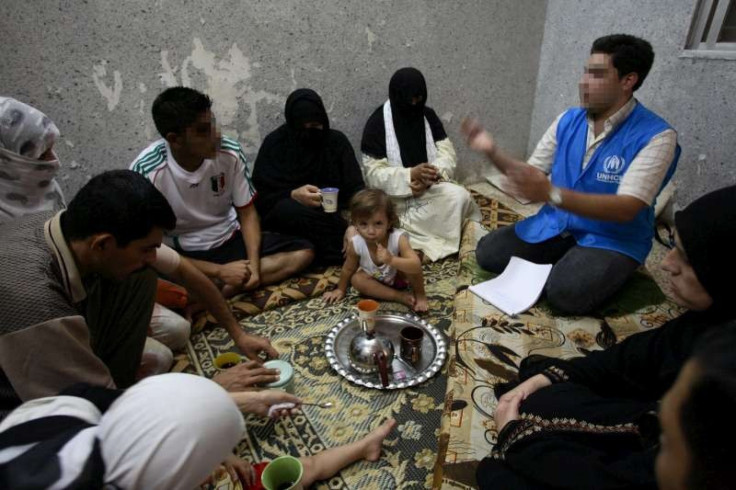Many More Than 1 Million Displaced In Syria: UN

The constant sounds of shelling and gunfire, sleeping outside as winter approaches, feeding babies with tea instead of milk --these are just some of the challenges Syrian refugees are facing as the United Nations' World Food Programme attempts to distribute aid to hundreds of thousands of displaced people.
Speaking from her office in Damascus, World Food Programme Spokeswoman for the Middle East and North Africa Abeer Etefa said the situation on the ground for the approximately 1.2 million internally displaced Syrian people was often unstable, but that the Programme has managed to reach most people across Syria’s 14 governorates, or states.
“Our priority is the internally displaced people,” Etefa said, but reaching all those people is a “constant challenge.”
“We have up-scaled our operations many times,” she added. “We started last October with a caseload of 57 people, then it was 157, now it’s 1.2 million.”
However, Etefa noted that from talking to other NGOs also working in Syria, the actual number of internally displaced persons is probably closer to 1.5 to 2 million, most of whom, according to Etefa, are women with babies and children. That’s 2 million people who “are living in places with no doors, no windows,” Etefa said.
“Winter’s coming, they need blankets, they need baby food, they need baby milk.” In some places, she said, mothers are filling baby bottles with tea just to try and keep the babies quiet.
The average food basket from the WFP contains about 1500 calories per person for a family. It includes a family ration of rice, bulgur, oil, canned beans, canned meat, tea, and sugar.
The internal food markets in Syria have been greatly stunted since the beginning of the conflict, Etefa said. In some places, markets are not functioning at all, and the agriculture sector has suffered tremendous losses, affecting approximately 3 million people.
Even in places where the violence has subsided, she said, people are not confident enough to open their shops. In some regions where there are still some functioning markets or stores, food prices have increased by 400 percent.
Currently, Etefa said, the WFP is working on the ground with the Red Crescent and with a local NGO based in the city of Homs to get food baskets distributed. They are currently operating in most places in all 14 governorates, and are providing some assistance to Syrian refugees now living in Jordan and Lebanon.
The main problem the WFP facing, Etefa explained, is that once the Red Crescent and WFP had done the proper assessment in an area and distributed the needed aid, violence would often flare up again and everyone would be re-displaced.
Many of the displaced families have had to move two or three times, Etefa said. They might be able to rent an apartment that they then will have to share with four or five other families. Many find public shelter in mosques, churches, public schools, and universities.
“I saw a figure from the Red Crescent that there are 1 million people living in 800 schools around the country,” Etefa said. “You see displacement everywhere. People from Damascus flee to Homs, people have fled Homs to Damascus.”
Responding to a question about a church in Homs known to be aiding orphans, Etefa responded that she thought there were about 300 children currently relying on the church.
“They are not all orphans, some are just neighborhood kids,” she clarified, “The church is just helping these kids recuperate. They are doing project and art work and giving them private tutoring to help them go back to school since the school year has started again.”
Etefa said that the WFP in Syria had around 30 people working for it who were internally displaced Syrians themselves. “We have one worker who lived about 20 kilometers outside Damascus,” Etefa said. “She had to flee her home with her mother and left everything behind.”
The WFP volunteers themselves have had to be especially careful: they are travelling in armored vehicles with “UN” painted on and visible from all angles, and always have letters with U.N. officials on them describe the “pure humanitarian goals” of the mission, Etefa said.
Luckily, Syria is not yet in a state of a food crisis, Etefa said, and some of the hard-to-reach hot-spot areas of severe conflict are re-opening, Etefa said.
“The bread is still available in bakeries, although it’s mainly government bakeries,” she said. “It’s a situation where we continue to assess the needs of each area.”
© Copyright IBTimes 2024. All rights reserved.












